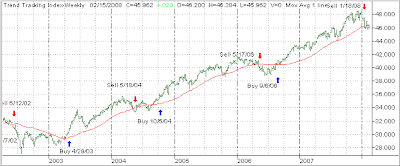 In the latest saga of bond insurers’ problem, Bloomberg reports that “Bond Insurer Split May Trigger Lawsuits:”
In the latest saga of bond insurers’ problem, Bloomberg reports that “Bond Insurer Split May Trigger Lawsuits:”
Regulators’ plans to break up bond insurers into “good” businesses covering municipal debt and “bad” businesses liable to subprime-related losses may trigger “years of litigation,” Bank of America Corp. analysts said.
New York Insurance Department Superintendent Eric Dinallo and New York Governor Eliot Spitzer said last week that insurers may need to be divided if they can’t raise enough capital to compensate for losses on subprime-mortgage guarantees. FGIC Corp., the fourth-largest of the so-called monoline insurers, asked to be split on Feb. 15 after Moody’s Investors Service cut the Stamford, Connecticut-based company’s top Aaa ranking.
“It is the equivalent of going to a casino and trying to keep only the winning bets,” said Tim Mercer, chief investment officer at Hong Kong-based hedge fund Musashi Capital Ltd. “This would be a straightforward case of fraudulent conveyance and everyone involved would be liable for damages from deprived creditors.”
FGIC, owned by Blackstone Group LP and PMI Group Inc., insures about $314 billion of debt, including $220 billion in municipal bonds. The company said last week it applied for a license from New York state insurance regulators to create a standalone municipal company and separate the unit that guarantees subprime-mortgage bonds and related securities that led to rating downgrades.
New York-based Ambac Financial Group Inc., the second- largest bond insurer, may also seek a split, the Wall Street Journal reported today, citing a person familiar with the situation.
Not being an attorney, I certainly can’t comment on the legalities of such a break up. However, it sounds like a desperate attempt to keep a sinking ship afloat. I agree that a split would create a ‘good’ company and a ‘bad’ one.
It would appear that years of legal entanglement will be a sure thing, so why prolong the inevitable? If a company can not do business based on its model, has made grave mistakes or the model has become flawed, a natural conclusion might be that it should become road kill.






